The Ytravel team are extremely proud of ourselves to have scored a masterclass with this amazing woman. This week Michelle Abel shares her tips for taking ethical, beautiful photographs of the people you meet on your travels.
When you travel everything you see seems to be coated with beauty. The texture of fabric in a dress, the crumbling wall of a shrine, the dust rising from bare feet in the market, the big smiling eyes of curious children. Everyday people going about their day doing everyday things can seem to the visitor endlessly interesting. And out come our cameras…
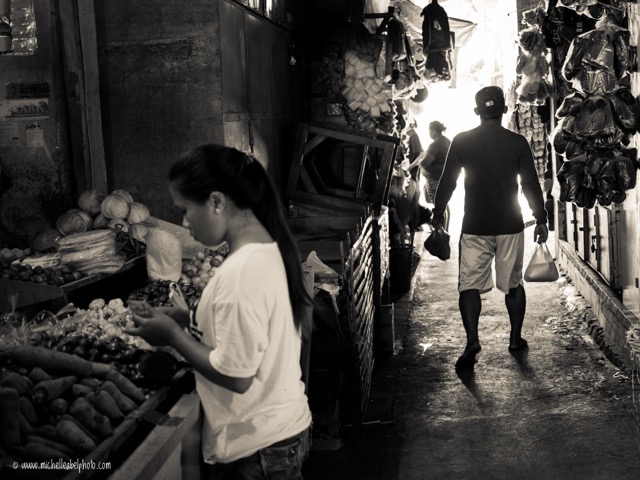
As a traveller or visitor in a foreign country we really have no idea of what is going on, what real poverty looks like in this place, or the norms of life for families. So how can we take photos that share amazing stories and also maintain the dignity of the subject and protect the vulnerable? There are two personal rules I have when taking photographs of people when I travel. I will illustrate my personal rules with photographs I shot during a recent trip to the Philippines.
Rule 1 – Never take a photograph that portrays a person or family as a victim. Most likely you are not a photographer for a news organisation, so as a traveller your photographs should always show dignity and respect. Make sure you photograph people dressed appropriately according to cultural norms. Make sure you show respect in your photos to the hard work that people do, and the richness of their life and relationships. You have no real understanding of what poverty is in the local context, so look beyond your own labels and assumptions of “poor” and hunt for photographs that show things like the love between siblings, the way family members work together to produce food or earn an income, the ambition of a teenage girl to complete her studies, the shy hope of a young mother for a healthy baby, the hope of a young farmer for a successful crop. If you are lucky enough to get invited into someone’s home ignore your assumptions about dirt floors or pit toilets and remember that a home is much more than stuff.

This lovely lady had lost her home during a typhoon. She had a new home and was so proud of it. Hanging outside were rows and rows of white washing – she took in laundry to earn an income. Inside the floor was packed dirt. There was no running water, no internal plumbing. But she was so proud of her new home and invited me in to sit with her children.
Rule 2 – Always be careful when photographing children. Many times children will be bouncing around your feet, laughing, teasing, curious. If your photograph will be a crowd of happy bouncing children where it is impossible to really identify any single child then that is ok, but if your photograph will be a close up portrait of those big smiling eyes then you need to get permission from a parent or adult guardian. Children don’t know that they can refuse to be in a photograph, so it is important whenever possible to get adult permission – especially if you want to share photographs publicly via social media. And if you do get permission to take a portrait of a child to publish elsewhere, never ever publish a portrait of a childtogether with their name and location. All children deserve anonymity and respect – and respect also includes not photographing children who are naked or partly naked.
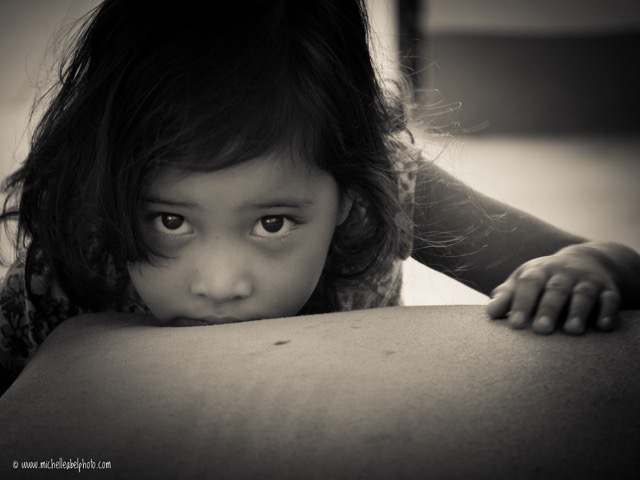
A young girl who attended a community meeting with her mother was as fascinated with me as I was with her!
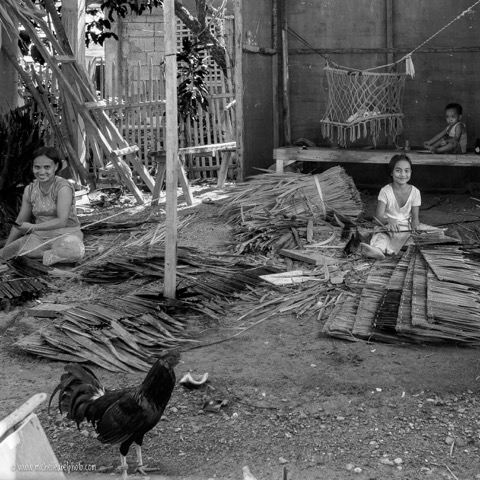
This girl has to work with her mother during the school holidays weaving roofing material so they can pay for her school books. The rooster was strutting about like he owned the place. Using black and white lets you see the smiles on their faces without being distracted by the bright green of the weaving material.
Enshrine these two rules into your photography approach and you will know you are maintaining dignity and treating those you photograph as you would like to be treated if a visiting photographer had their lens pointed at your or your family.
Now, back to the beauty that hits you in the face when you step off the plane. One of the best rewards of travel is that it allows us to spend some time seeing and experiencing “otherness.” We can escape our routine and familiar lives and get a chance to observe life for the first time as an outsider. Experiencing the new when we travel is one of the closest ways we can revisit what it was like to be a child and everything around was new and interesting. But how do you get all these feelings into a photograph? There is lots of online advice about lighting, camera kit, composition etc, but here are a few of the things that I always keep in mind when photographing people when I travel.
When you look through the camera try to look at the photograph from a point of time in the future. When you look at this photograph in the future you won’t be surrounded by the unfamiliar sounds and smells. So what is it in your photograph that captures the newness you feel? Is it their eyes? Make sure the eyes are in focus, with the light on their face to show how the eyes shine. Is it their hands working on a craft or cooking local food? Move in closer and get their hands in action, show the detail of the craft or the cooking fire? Is it an emotion? Press the trigger at the point of laughter, when it is impossible not to feel the energy of the smile or laugh caught in that moment.

In this photo I wanted to show a historical perspective. This woman had 12 children. She lost her home in a typhoon but had managed to save some photos. She now lives in a very simple small house built for her by an NGO. The picture above her shows her and her husband when they were much younger.
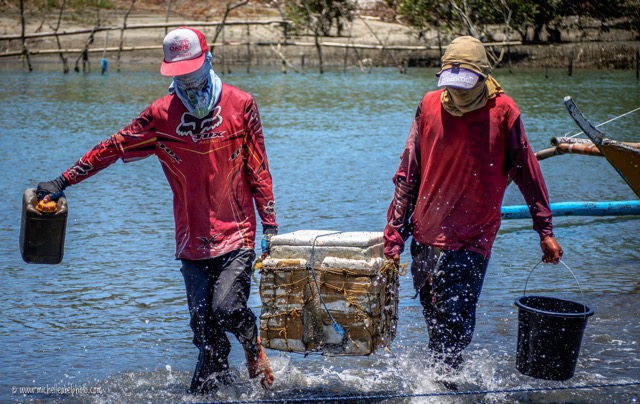
These are two fishermen carrying in their catch after spending hours on the water. They are completely covered to protect their skin from the sun. I liked how they had matching red tops. I was meeting with fishermen to talk about their reduced catch after the typhoon.
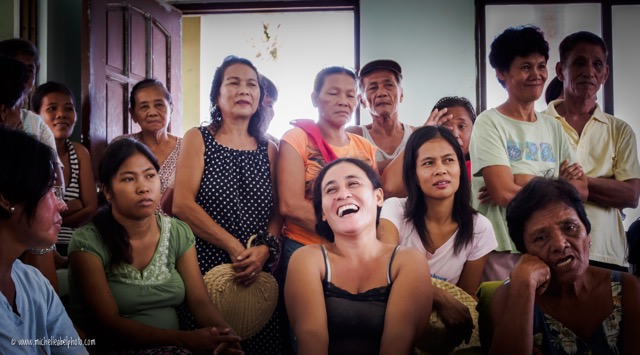
These are a group of community people at a meeting. They are laughing at me because I have just asked them a silly question that shows how much I don’t understand about their lives!
Sometimes, allow yourself to put your camera away and just absorb the newness around you for a bit. Look, listen, and create your own memories. You can get caught up in taking so many photographs (because the next one will be your masterpiece!) that you end up experiencing most of your trip through your camera viewfinder. By giving yourself the space to look and absorb you usually see something amazing from a larger perspective that you can then plan to photograph more closely.
The final photograph I want to share is a portrait of a community leader. I listened to him speak with wisdom about climate change and community leadership for over an hour before I asked him if I could take his portrait. I wanted to capture the wisdom and kindness from a life of community service. I took my time planning the photograph, and now the portrait reminds me of the many stories he shared and the community where they are trying out new ways to earn income since their traditional livelihoods are no longer viable.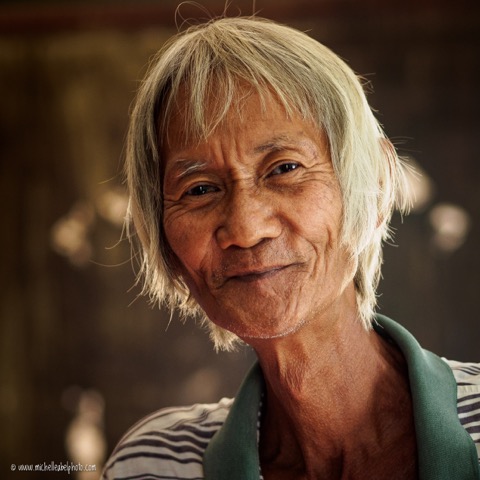
Mic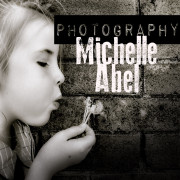 helle Abel is a writer, photographer and international community development consultant. She shares her photography on Facebook and blogs at michelleabel.com.au
helle Abel is a writer, photographer and international community development consultant. She shares her photography on Facebook and blogs at michelleabel.com.au

